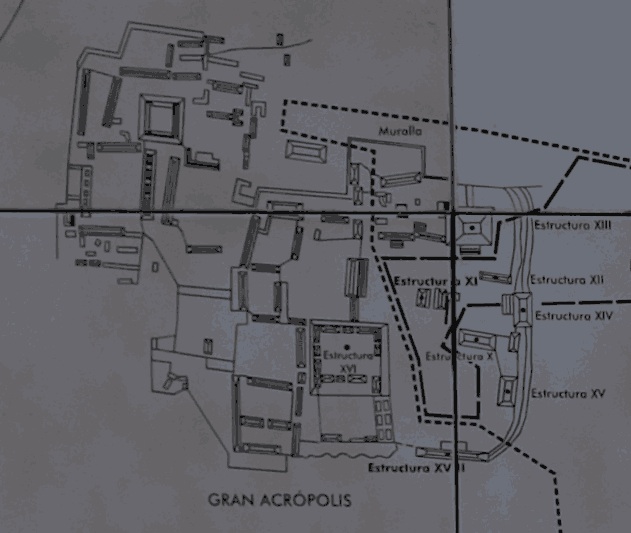The Grand Acropolis was actually smaller and more subdued than the Central Plaza. Only 1 temple was around the size of Temple III and Temple VII: Temple XIII. The Grand Acropolis also included the ubiquitous Ball Court/Temple XI. The Grand Acropolis felt quieter than the Central Plaza. I did not feel much else at these temples.
According to the INAH Plaque accompanying the Grand Acropolis, the ruler Yukom-?-Tok, the last ruling member of the Yukom lineage which held power for more than a century, made the last modifications to the Grand Acropolis. The Grand Acropolis contains a public area and an area reserved for the houses of royal lineage. The public area was divided into 2 sections, the North and the South Plazas, according to the different types of ceremonial activity carried out in each.
The North Plaza contains Temple XI/the Ball Court, Temple XIII with its annex, and Temple XIV. The South Plaza contains 12 stelae preceding Temple XV, Temple XVI, and Temple XVII.
The Mayans constructed about 10 patios and small plazas encircling the palatial complexes to the west of the public areas. The Mayan constructed the access to these palatial complexes at a higher level than that of the public areas. The Mayans built a protective wall up to 6 meters (about 19 1/2 feet) surrounding the northern sector because it was the most vulnerable.











